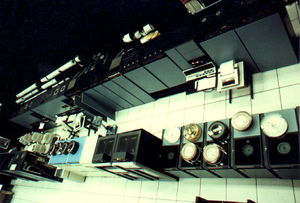Difference between revisions of "Foonly"
From Computer History Wiki
(Added a section about peripherals, only the C1 channel for now.) |
(→External links: Brochure about the 26KL.) |
||
| Line 23: | Line 23: | ||
* [http://dave.zfxinc.net/f1.html Dave Sieg about the F-1] | * [http://dave.zfxinc.net/f1.html Dave Sieg about the F-1] | ||
* [http://www.bitsavers.org/bits/Foonly/F2/ Foonex monitor, microcode, and working microcode assembler] | * [http://www.bitsavers.org/bits/Foonly/F2/ Foonex monitor, microcode, and working microcode assembler] | ||
| + | * [http://www.bitsavers.org/pdf/sri/arc/augment_engine/26KL_Brochure_Oct83.pdf Tymshare's System 26KL] | ||
{{stub}} | {{stub}} | ||
[[Category: Computer Manufacturers]] | [[Category: Computer Manufacturers]] | ||
Revision as of 09:34, 29 May 2023
Company making PDP-10 clones.
They made their own operating system, FOONEX, for their machines. It was based on TENEX.
Computer Models
The F-1 was an ECL adaptation of the original Superfoonly design. It was built at III for use in a optical character recognition system. It was bought by Omnibus for generating computer graphics.
The F-2 was a small machine. Among other places, it was used at CCMRA (running WAITS) and Symbolics.
The F-3 and F-4 were popular with Tymshare, which built their own versions. Tymeshare's System 26KL was an update of the F-4 design with KL10 capabilities, intended to run Doug Englebart's Augment.
The F-5 was another small machine.

